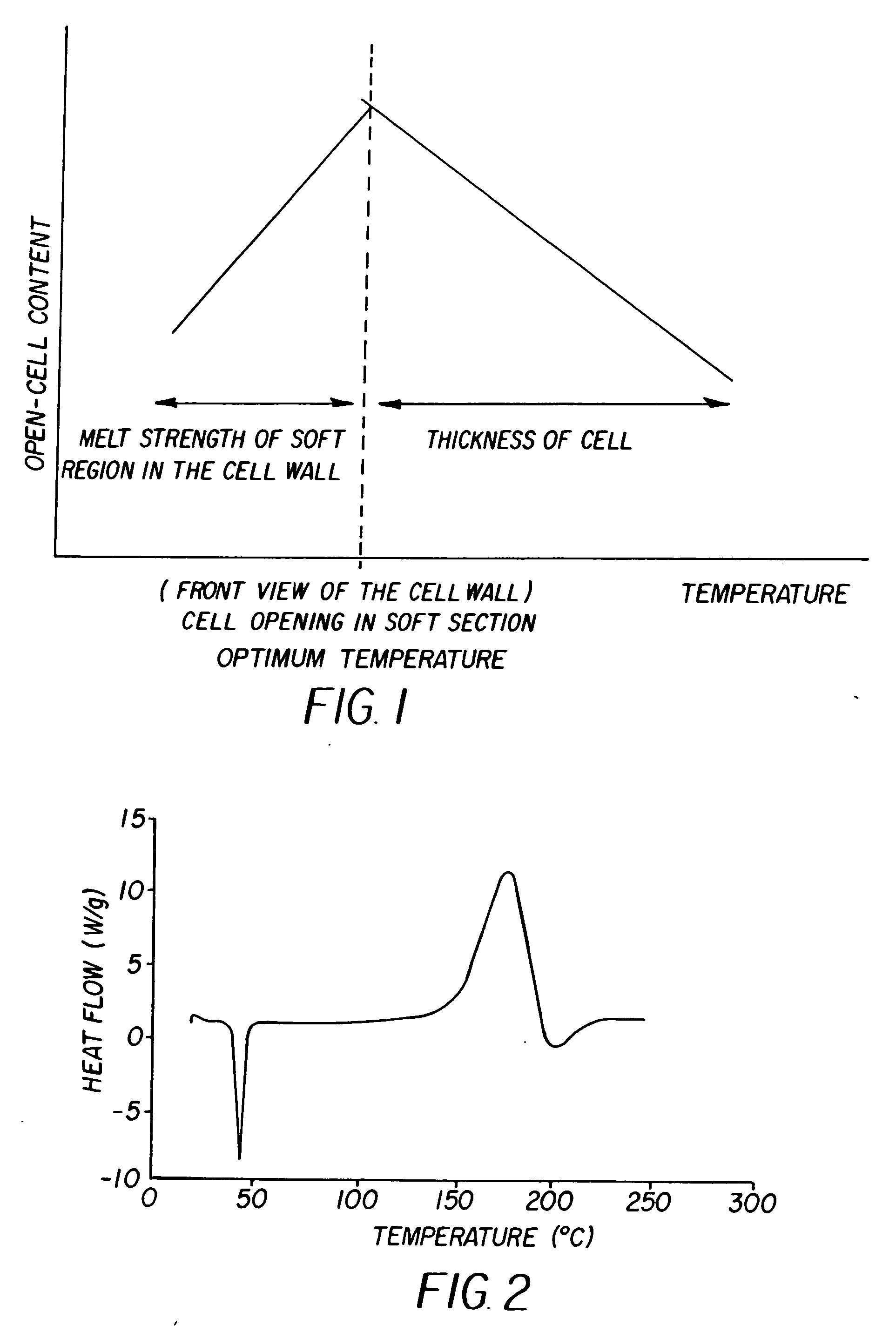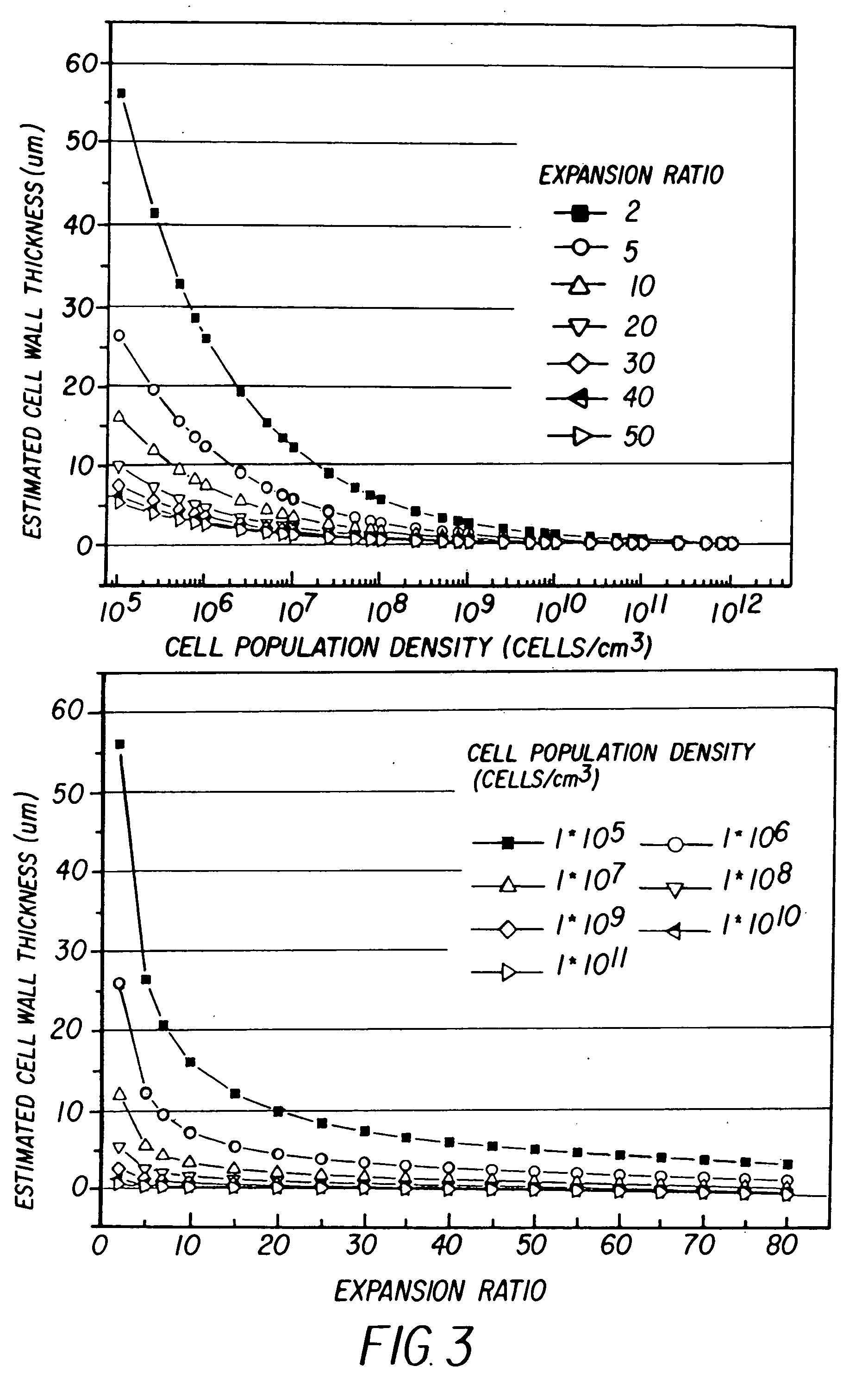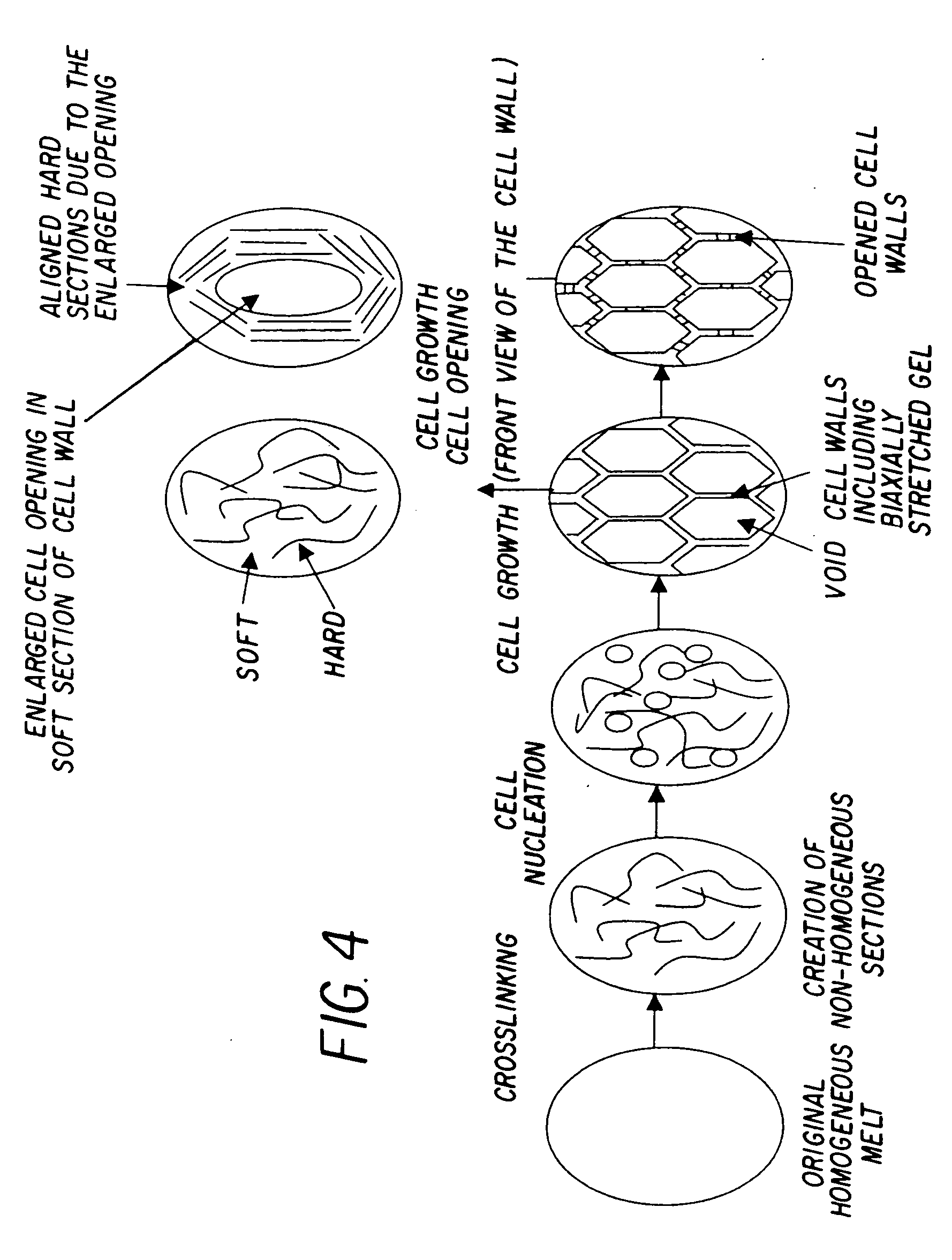Manufacturing process for open celled microcellular foam
a microcellular foam and manufacturing process technology, applied in the field of open celled microcellular foam preparation, can solve the problems of low cell density, low cell density, and high cost of processing, and achieve the effects of low cost, high open cell content, and small cell siz
- Summary
- Abstract
- Description
- Claims
- Application Information
AI Technical Summary
Benefits of technology
Problems solved by technology
Method used
Image
Examples
examples
Experimental Materials
[0119] The plastic materials used were commercial low density polyethylene (LDPE) resins supplied by NOVA Chemicals. The product names are Novapol® Polyethylene LC-0522-A (denoted as LDPE-A) and LC-0717-A (denoted as LDPE-B). The melt index (ASTM D 1238, 190° C. / 2.16 kg) of LC-0522-A and LC-0717-A are 4.5 g / 10 min and 7.0 g / 10 min, respectively. The foamable polymer densities (ASTM D 792) are 0.9222 g / cm3 and 0.917 g / cm3, respectively. These polyethylene resins are biologically and chemically inert. The other foamable polymer resin used was polystyrene (PS) from NOVA Chemicals. The product name is Nova Crystal Heat Resistant PS 101. The melt index is 2.2 g / 10 min and the density of this polystyrene is 1.04 g / cm3.
[0120] The crosslinking agent was an organic peroxide supplied by R. T. Vanderbilt Company Inc. This dicumyl peroxide has the trade name of Varox® DCP-40C. The melting or sublimation point of this chemical is 38° C. (100.4° F.) and the specific gravi...
PUM
| Property | Measurement | Unit |
|---|---|---|
| average cell sizes | aaaaa | aaaaa |
| average cell sizes | aaaaa | aaaaa |
| cell sizes | aaaaa | aaaaa |
Abstract
Description
Claims
Application Information
 Login to View More
Login to View More - R&D
- Intellectual Property
- Life Sciences
- Materials
- Tech Scout
- Unparalleled Data Quality
- Higher Quality Content
- 60% Fewer Hallucinations
Browse by: Latest US Patents, China's latest patents, Technical Efficacy Thesaurus, Application Domain, Technology Topic, Popular Technical Reports.
© 2025 PatSnap. All rights reserved.Legal|Privacy policy|Modern Slavery Act Transparency Statement|Sitemap|About US| Contact US: help@patsnap.com



